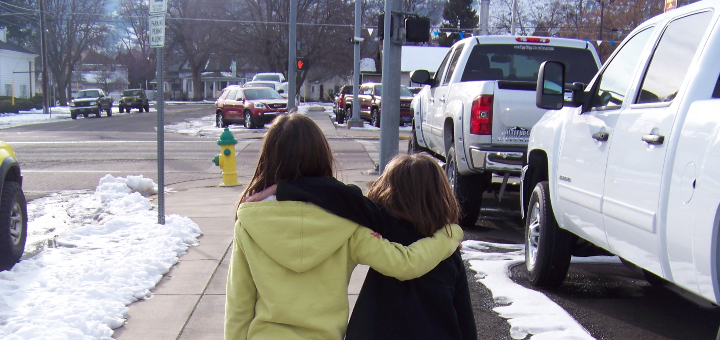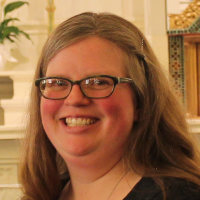
 Copyright 2020 Amanda Villagómez. All rights reserved.[/caption]
This month I continue the conversation in my Walking Well series with Lev Vygotsky’s zone of proximal development (ZPD). A little under 20 years ago, I began taking courses in education, and ZPD is one of the educational concepts that has stood out from my first year of coursework and continues to inform my teaching today. The theory focuses on the optimal instructional target. It expresses that while at any given point of time some teaching points would be too easy or too challenging, others are just right. This space just beyond what students can already do independently allows for learning with the support of a more capable peer or adult.
In order to ensure that instruction is aligned to actual needs of students and their current progress, ongoing assessment and reflection is necessary, rather than relying on programs or pacing guides alone. Intentionally aligning to ZPD moves beyond one-size-fits-all solutions.
Within an evangelization context, from an educational standpoint, ZPD helps us to intentionally consider where individuals, families, and communities are at in their faith journeys. Coupled with an understanding of natural progressions towards purpose-aligned goals, ZPD helps us to then meet people where they are at. It also helps us to be more aware of all the different layers in place that can impact growth over time.
On the spiritual side, ZPD provides us with a reason to trust in God, who is all good and fully knows and loves us. Knowing exactly what we need, when we need it, and how we need it, He perfectly provides contexts for us to learn and grow that are tailored to us as individuals. This can provide comfort to all who are striving to be disciples and surrendering to God’s will.
Copyright 2020 Amanda Villagómez. All rights reserved.[/caption]
This month I continue the conversation in my Walking Well series with Lev Vygotsky’s zone of proximal development (ZPD). A little under 20 years ago, I began taking courses in education, and ZPD is one of the educational concepts that has stood out from my first year of coursework and continues to inform my teaching today. The theory focuses on the optimal instructional target. It expresses that while at any given point of time some teaching points would be too easy or too challenging, others are just right. This space just beyond what students can already do independently allows for learning with the support of a more capable peer or adult.
In order to ensure that instruction is aligned to actual needs of students and their current progress, ongoing assessment and reflection is necessary, rather than relying on programs or pacing guides alone. Intentionally aligning to ZPD moves beyond one-size-fits-all solutions.
Within an evangelization context, from an educational standpoint, ZPD helps us to intentionally consider where individuals, families, and communities are at in their faith journeys. Coupled with an understanding of natural progressions towards purpose-aligned goals, ZPD helps us to then meet people where they are at. It also helps us to be more aware of all the different layers in place that can impact growth over time.
On the spiritual side, ZPD provides us with a reason to trust in God, who is all good and fully knows and loves us. Knowing exactly what we need, when we need it, and how we need it, He perfectly provides contexts for us to learn and grow that are tailored to us as individuals. This can provide comfort to all who are striving to be disciples and surrendering to God’s will.
 Copyright 2019 Amanda Villagomez. All rights reserved.[/caption]
Jesus provided a glimpse into how He interacts with His people through a lens of what people are properly disposed to receive at that moment. For example, He said, “I have much more to tell you, but you cannot bear it now” (John 16:12). When different layers of life are not unfolding as we would wish, we can acknowledge but then pray, “Jesus, I trust in You.”
Another instance of a sense of ZPD within the gospels is the interaction between Peter and Jesus after the Resurrection.
Copyright 2019 Amanda Villagomez. All rights reserved.[/caption]
Jesus provided a glimpse into how He interacts with His people through a lens of what people are properly disposed to receive at that moment. For example, He said, “I have much more to tell you, but you cannot bear it now” (John 16:12). When different layers of life are not unfolding as we would wish, we can acknowledge but then pray, “Jesus, I trust in You.”
Another instance of a sense of ZPD within the gospels is the interaction between Peter and Jesus after the Resurrection.
Jesus said to Simon Peter, “Simon, son of John, do you love me more than these?” He said to him, “Yes, Lord, you know that I love you.” He said to him, “Feed my lambs.” He then said to him a second time, “Simon, son of John, do you love me?” He said to him, “Yes, Lord, you know that I love you.” He said to him, “Tend my sheep.” He said to him the third time, “Simon, son of John, do you love me?” Peter was distressed that he had said to him a third time, “Do you love me?” and he said to him, “Lord, you know everything; you know that I love you.” [Jesus] said to him, “Feed my sheep.” (John 21:15-17)Even though it is not as evident in the English translation, the first two times Jesus asked Peter whether he loved Him with an agape love but Peter responded with an affirmation of friendship love. The third time, Jesus met Peter where he was at and asked him whether he loved Him with a friendship love. In this sense, Jesus pointed Peter towards the direction he was heading, a goal to grow toward - loving Jesus with an agape love, but in that moment, He would accept what he could offer - his friendship love.
Lord, You understand all the layers of my heart in ways that I fail to understand. I place my trust in Your loving providence. Lead me and guide me, Lord. Help me to cooperate with Your grace in order to support others as we grow in holiness alongside each other.
Copyright 2020 Amanda Villagómez
About the Author

Amanda Villagómez
Amanda Villagómez is a wife, mom of 6, and teacher educator. On her personal site, she focuses on the beauty of becoming who God created us to be by celebrating the process of change and growth.


.png?width=1806&height=731&name=CatholicMom_hcfm_logo1_pos_871c_2728c%20(002).png)
Comments